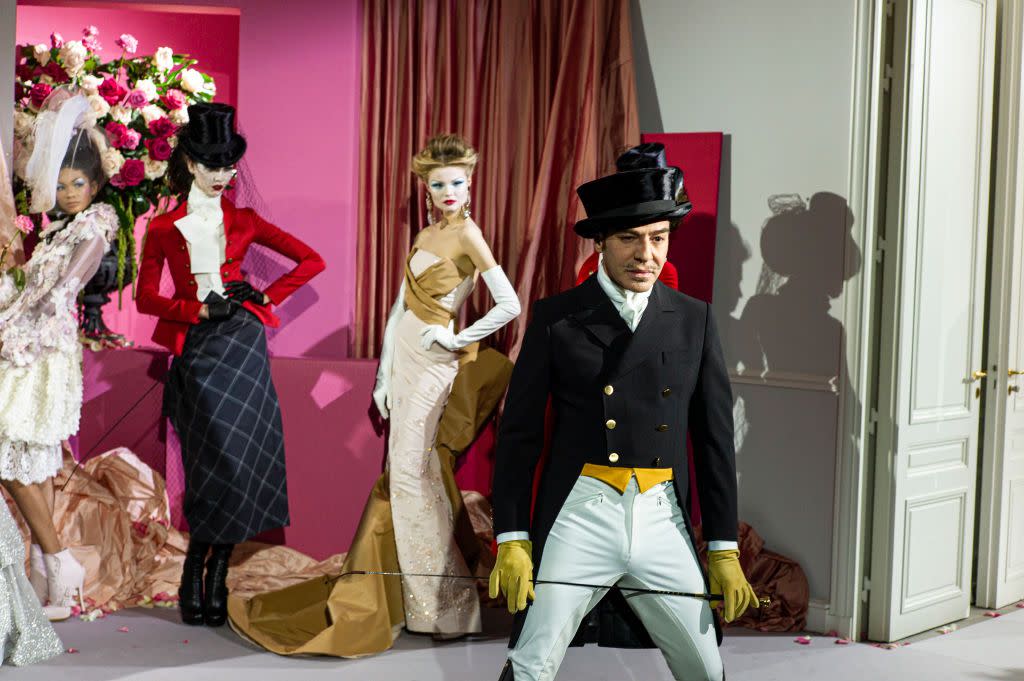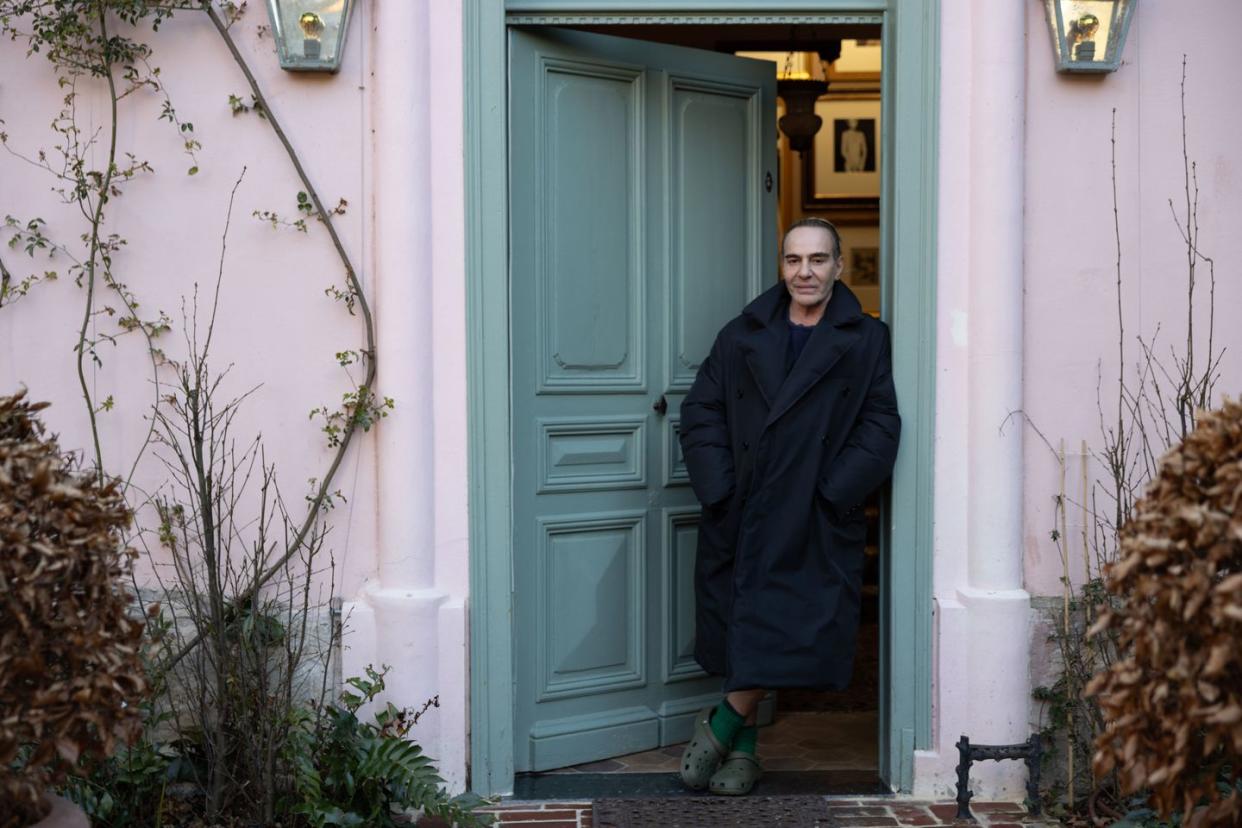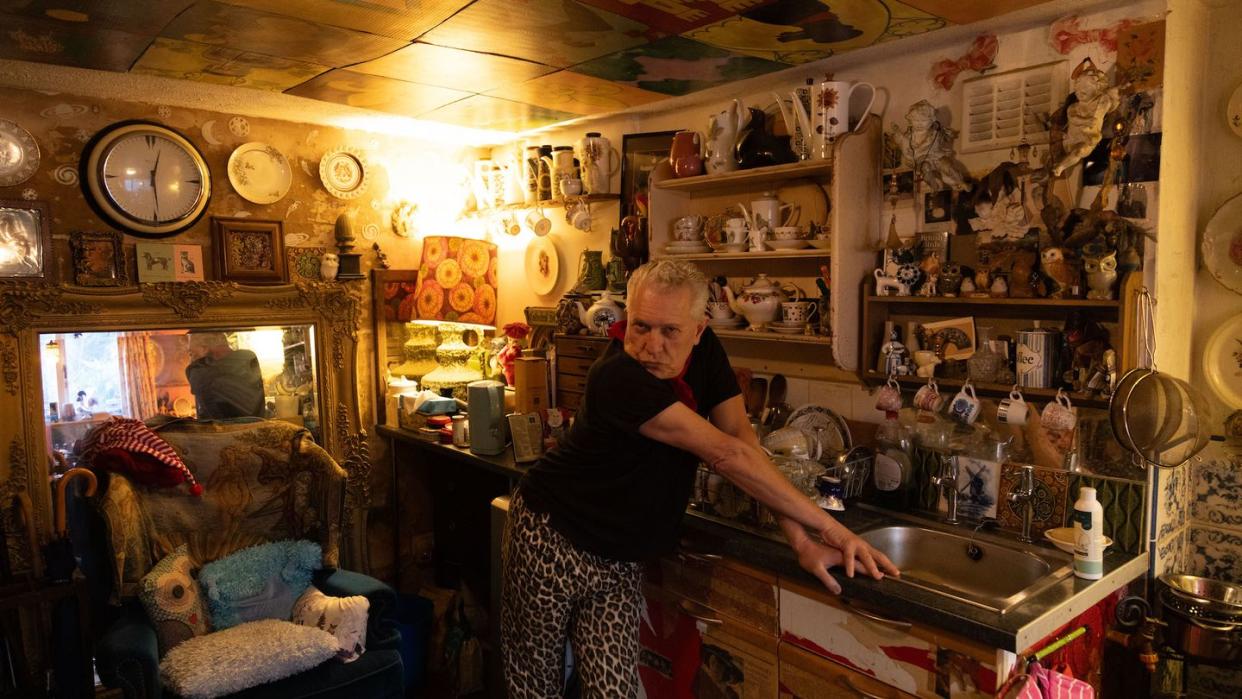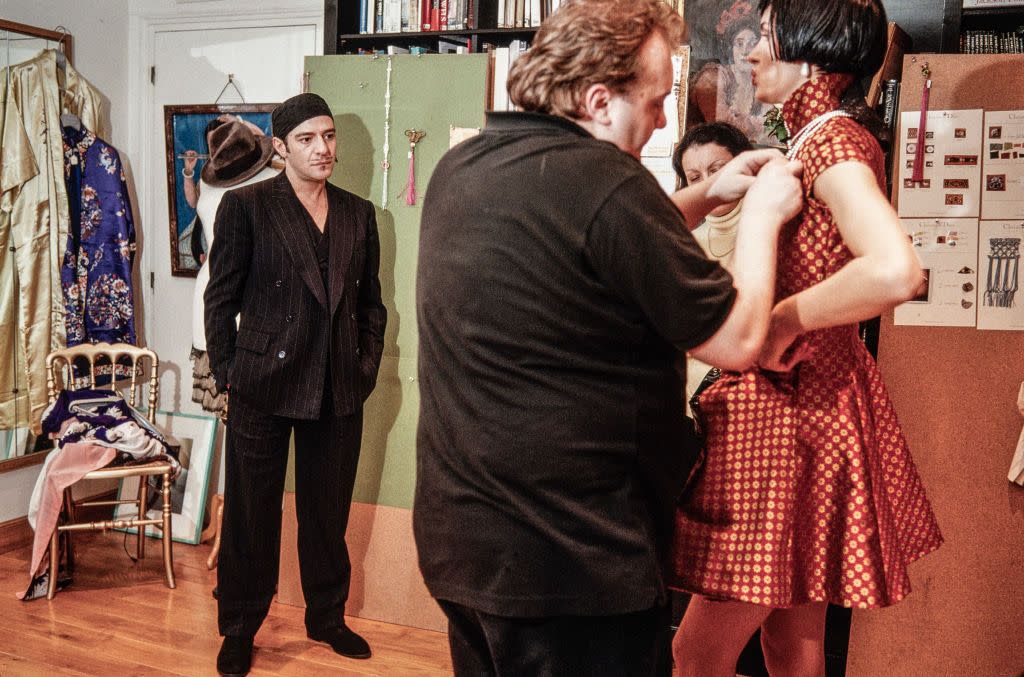The Missed Opportunity of "High & Low — John Galliano"

"Hearst Magazines and Yahoo may earn commission or revenue on some items through these links."
You can’t blame fashion for getting into the documentary business. Everybody else already has. Michael Jordan, Jennifer Lopez, Prince Harry and Meghan, they’ve all participated in recent documentaries that breathlessly promise—for the first time!—to share their side of the story as they experienced it, not as reported by pesky tabloids. Except these projects, despite their varying degrees of gravity, are not 20 Days in Mariupol. They are not interested, as that film’s director Mstyslav Chernov put it at the Oscars, in making sure “the history record is set straight and that the truth will prevail.” These can more accurately be described as exercises in brand building, often produced by the subjects and obliging partners to enhance legacies, move product, and shape public opinion without the bother of journalists and unhelpful camera crews.
Jordan’s The Last Dance, Lopez’s Halftime, and Netflix’s Harry & Meghan trade in the language of nonfiction film to deliver not so much advertisements as glossy versions of the truth, not unlike the features that grace the pages of fashion magazines. So it’s not surprising that the publishing outfit Condé Nast has brought its touch to this emerging genre with High & Low — John Galliano (streaming on Mubi in April after a limited theatrical run). Its subject is the former creative director of Christian Dior, a genius couturier known for epic, beautiful runway productions who was fired in 2011 for drunken, antisemitic outbursts caught on video at the Paris café La Perle.

You can’t be blamed for wondering why the film is coming out well over a decade after the original incident. Galliano has been welcomed back into luxury’s inner circle as the creative director of the influential (if small) label Maison Margiela, and his January haute couture collection was widely acclaimed, with Vogue, a perennial cheerleader, leading the chant. “The John Galliano Show My Generation Has Been Waiting For,” one piece gushed. It was written by an associate producer on High & Low, which was co-produced by Condé. Never mind that this is a bit like Disney promoting the release of Taylor Swift: The Eras Tour with a pull quote by Hannah Montana: “The greatest concert movie since Hannah Montana: The Movie!”
Galliano, for all intents and purposes, has been forgiven. Who remains to be convinced of his contrition? Perhaps, as the journalist Dana Thomas has suggested, there’s renewed interest in elevating Galliano to one of the major fashion houses. (Thomas wrote the 2015 book Gods and Kings, about Galliano and his late peer, Alexander McQueen, who is mostly overlooked in the documentary.)

One suspects, too, that Condé, looking around at the avalanche of nonfiction programming clogging streaming platforms, sought to get in on the action and amplify content adjacencies along the way: A fixture in the magazine’s pages begets a movie begets an article begets a panel during a live event begets a red carpet comeback on the steps of the Met gala. Vertical integration! It’s not just a Jack Donaghy joke on 30 Rock. At One World Trade, it’s the guiding principle behind Condé Nast Entertainment, a division that was created back when I was a media reporter to turn the company’s intellectual property into blockbuster films and TV. Seen any of them lately? No, The Devil Wears Prada was not theirs. Neither, for that matter, was The September Issue, which offered an inside look at the making of what was already in 2009 a dusty artifact. Condé Nast Entertainment, it should be noted, is undergoing a restructuring, with parts of the division “on the chopping block,” according to the New York Times.
The result, this time, is a strange product. High & Low neither serves fans of Galliano’s work, who are legion (I include myself), nor its subject, who comes across as moated and out of touch. The director and co-producer is Kevin Macdonald, a tough documentarian who won an Oscar for One Day in September, about the killing of 11 Israeli athletes at the 1972 Munich Olympics. He brings a reporter’s sincerity to the proceedings, framing Galliano as a victim, first of a homophobic father and later, once he was successful, of the corporate pressure that fed his hubris and substance abuse to the point of implosion. It is without irony that Macdonald records interviews with Galliano at the designer’s humble 18th-century “treasure-filled hideaway in northern France” or that he splices the conversations with clips from the 1927 silent film Napoléon. (Another victim of the fashion-industrial complex?)

Macdonald manages to pierce fashion’s self-mythology: A classmate of Galliano’s at Central Saint Martins makes fun of the designer’s invented posh accent—but is never heard from again. Some talking heads, all with a front row seat to Galliano’s rise, admit to their role in his fall, but their participation in his comeback goes unacknowledged. Only the Washington Post critic Robin Givhan, in a terse clip from something one imagines was longer, states the obvious: Second chances like this one are rarely granted to anyone but white men with powerful allies.
Galliano, for his part, proves elusive, incapable or unwilling to face his blind spots and biases. He doesn’t remember how many antisemitic diatribes were caught on camera (three) or that he never apologized to the people he attacked at La Perle, including Philippe Virgitti, who experienced mental health issues after the scandal from the resulting media attention. Galliano concedes he has never watched the footage of their confrontation. Why would he when his sinecure was enabled, after just a brief timeout, by backers protective of his gifts and marketability? Whatever the personal cost was to Galliano remains out of Macdonald’s reach.

There’s only one scene when the mask drops. The director accompanies Galliano to the Dior archives for the first time since his dismissal. Affectionately greeted by an employee he hasn’t seen in years, he is reminded of Steven Robinson, his longtime best friend, confidant, and indispensable right hand at the maison, whose death of a drug-induced heart attack in 2007 shattered Galliano. Suddenly the designer is rendered speechless, and he begs Macdonald to turn the cameras off. A genuine moment of private grief is captured, and it suggests the fascinating documentary hiding beneath the slick scaffolding.
How does an artist recover from devastating loss and continue to create beauty? Is self-delusion inextricable from fantasy, especially in a world of make-believe? Does genius excuse moral failure? A more ambitious work would lay bare the visionary, complicated, and flawed subject at its center. But High & Low doesn’t dig too deep. The soft-focus portrait that emerges has just enough imperfections to make it credible, but it’s air-brushed into something toothless and forgettable, like so many fashion editorials.
You Might Also Like
